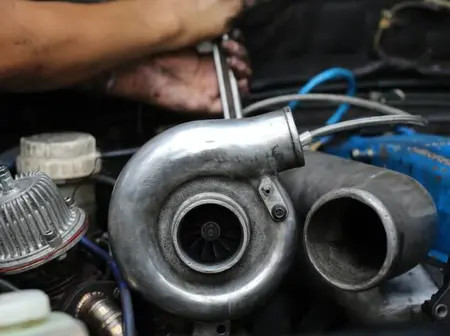Turbochargers have become essential components in modern automotive engineering, offering drivers increased power and efficiency from smaller engines. Understanding the different types of turbochargers can help you make informed decisions about upgrades or replacements.
Each turbocharger type offers unique advantages depending on your driving needs, budget, and vehicle specifications.
A single turbocharger system is the most common, straightforward approach to forced induction. These systems utilize a single turbine wheel powered by exhaust gases to compress the incoming air. Single turbos are well-suited for most everyday driving situations, offering a good balance between power enhancement and cost-effectiveness.
The main advantage of single turbochargers lies in their simplicity. They require fewer components, making installation and maintenance more manageable. Single turbos also tend to be more affordable than complex multi-turbo setups. However, they may experience some lag at lower RPMs, which can affect throttle response during city driving or stop-and-go traffic.
Twin turbocharger systems are available in two primary varieties: parallel twin turbos and sequential twin turbos. Parallel twin turbos use two identical turbochargers, each handling exhaust from half the engine’s cylinders. This arrangement reduces the load on each turbo and can improve response times.
Sequential twin-turbo systems employ two different-sized turbochargers that work in sequence. The smaller turbo operates at lower RPMs to reduce lag, while the larger turbo takes over at higher RPMs to maximize power output. This configuration provides excellent power delivery across the entire RPM range but adds complexity and cost to the system.
Water-cooled turbochargers incorporate the engine’s cooling system to manage heat more effectively than air-cooled alternatives. These systems circulate coolant through passages in the turbocharger housing, maintaining optimal operating temperatures even under demanding conditions.
The benefits of a water-cooled turbocharger include improved reliability, longer component life, and better performance consistency. Water cooling prevents excessive heat buildup that can damage seals and bearings. These systems are particularly beneficial for high-performance applications or vehicles operating in hot climates, where heat management is critical.
Selecting the appropriate turbocharger depends on several factors, including your driving style, performance goals, and budget constraints. Daily commuters who prioritize fuel efficiency and moderate power gains often find single turbochargers adequate. These systems provide noticeable improvements without overwhelming complexity.
Performance enthusiasts seeking maximum power output may prefer twin-turbo configurations, despite their higher costs. Racing applications or track-focused vehicles often benefit from the enhanced power delivery and reduced lag that twin systems provide.
When determining which type of turbocharger is right for your car, consider your specific needs carefully. Factor in installation costs, maintenance requirements, and your vehicle’s existing engine-management system capabilities. Consulting with qualified automotive professionals can ensure compatibility and optimal performance from your chosen turbocharger system.
The right turbocharger can transform your driving experience while maintaining reliability and efficiency. Take time to research options thoroughly, and choose a system that aligns with your performance goals and budget requirements.

Leave a Reply